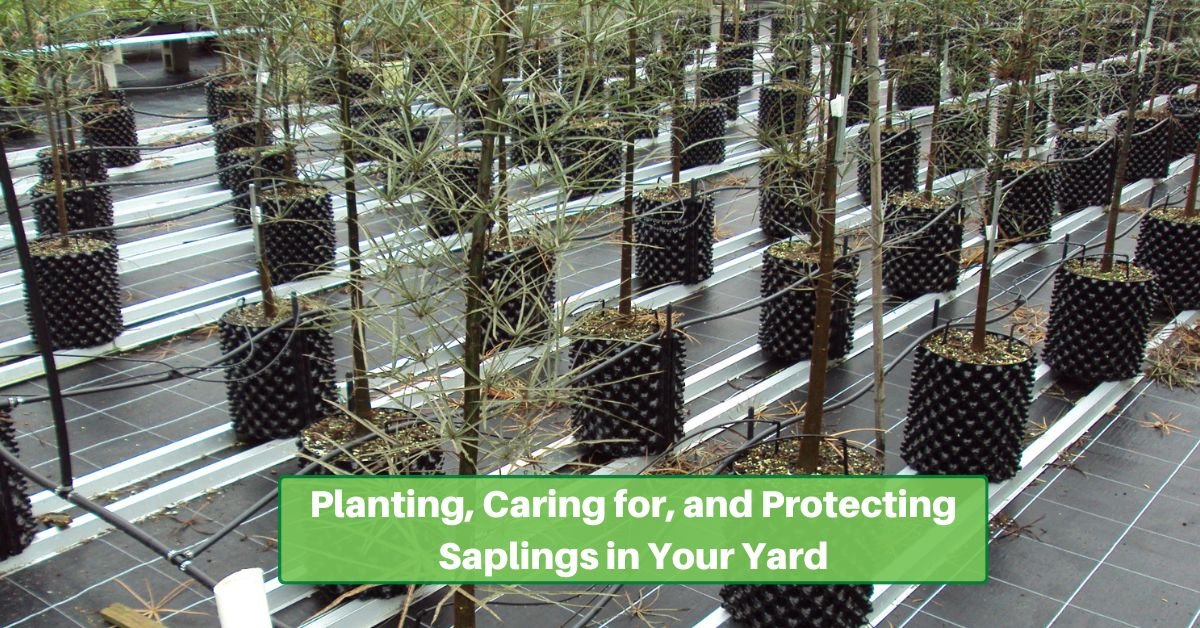Planting saplings in your yard is an environmentally beneficial activity that can enhance your living space. This guide will provide information on selecting suitable saplings, preparing your yard, gathering necessary tools, and executing the planting process. We’ll also discuss caring for your sapling as it begins to take root on its way to becoming a mighty tree.
Selecting the Right Saplings
Choosing appropriate saplings is crucial for their survival and long-term growth. Consider the local climate, soil type, and available space.
Remember to consider the full-grown size of what you’d like to plant. Ensure it won’t crowd out your existing vegetation. Also, ensure it won’t grow so large – above ground or below – that it could damage your home.
Conduct a soil test to determine its makeup; amend it accordingly to create an ideal environment for your saplings. You can buy a soil test online or at a local garden center.
Evaluate your yard’s available space, taking note of sunlight and shade patterns. Trees have different demands for light and will also add shadow to areas of your yard that currently get more sun.
Opt for native or adaptive plants to integrate seamlessly into your yard’s ecosystem. They’re more likely to thrive and less likely to cause harm to other flora and fauna.
Planning and Site Preparation
Equipping yourself with the appropriate tools is essential for successful planting. Gardening gloves protect your hands; this is especially helpful since you’ll be doing a lot of digging!
You’ll need a good shovel to dig the hole. You’ll also need mulch, fertilizer, and a watering can or hose to provide nutrients and moisture.
Consider burlap or tree wrap to protect your saplings from harsh weather conditions.
Planting Process
Start by clearing the chosen planting site of debris and weeds to facilitate healthy growth. Then, dig a hole twice as wide as the sapling’s root ball and of equal depth so the roots can spread.
Carefully remove the sapling from its container or wrapping, minimizing disturbance to the roots. Place the sapling in the hole, keeping the top of the root bulb at ground level. Backfill the hole with soil, gently compacting it to eliminate air pockets. Thoroughly water the sapling after filling the void.
Mulching and Fertilizing
Mulching is crucial for retaining soil moisture and regulating temperature. Choose a mulch type suitable for your saplings and apply it around the base. Leave space near the trunk to prevent rot.
Fertilization is equally essential for supplying essential nutrients. Select an appropriate fertilizer and apply it as recommended.
Watering Routine
Establishing a consistent watering routine is vital, especially during the initial stages of sapling growth. Adjust the schedule based on weather conditions to prevent over or under-watering. Monitoring soil moisture levels ensures that your saplings receive the correct amount of hydration, promoting healthy root development.
Wrapping Saplings for Protection
Wrapping saplings can safeguard them during their vulnerable early stages. Materials such as burlap or tree wrap provide insulation against extreme weather conditions, pests, and rodents.
Maintenance Tips
Regular maintenance becomes essential as your saplings grow. Pruning encourages healthy growth and helps shape the plant. Keep an eye out for pests and diseases and take immediate action if any signs appear. You may also need to stake your saplings to provide support against strong winds or heavy rainfall.
As one season turns to another, adjust your care routine to the needs of your saplings.
Encouraging Growth and Health
As you watch your tree grow, learn to recognize signs of vitality, such as vibrant leaves, robust stems, and the emergence of beautiful blooms in the case of flowering trees. Providing additional support using fertilizer, water, and stakes as needed to help the trees continue to thrive and contribute to your yard’s visual appeal and environmental benefits.
Planting, caring for, and protecting saplings in your yard is aesthetically rewarding and environmentally significant. It promotes sustainability and personal growth as you nurture and care for these green additions. Following our guide, you can cultivate a more vibrant, eco-friendly space in your backyard!









